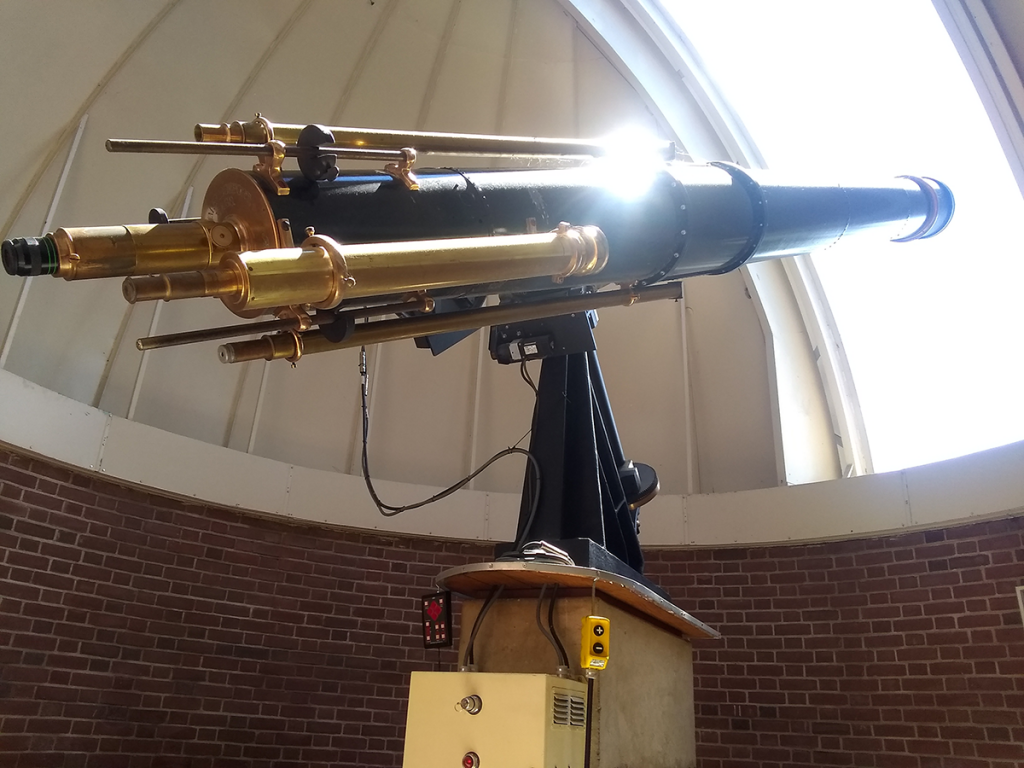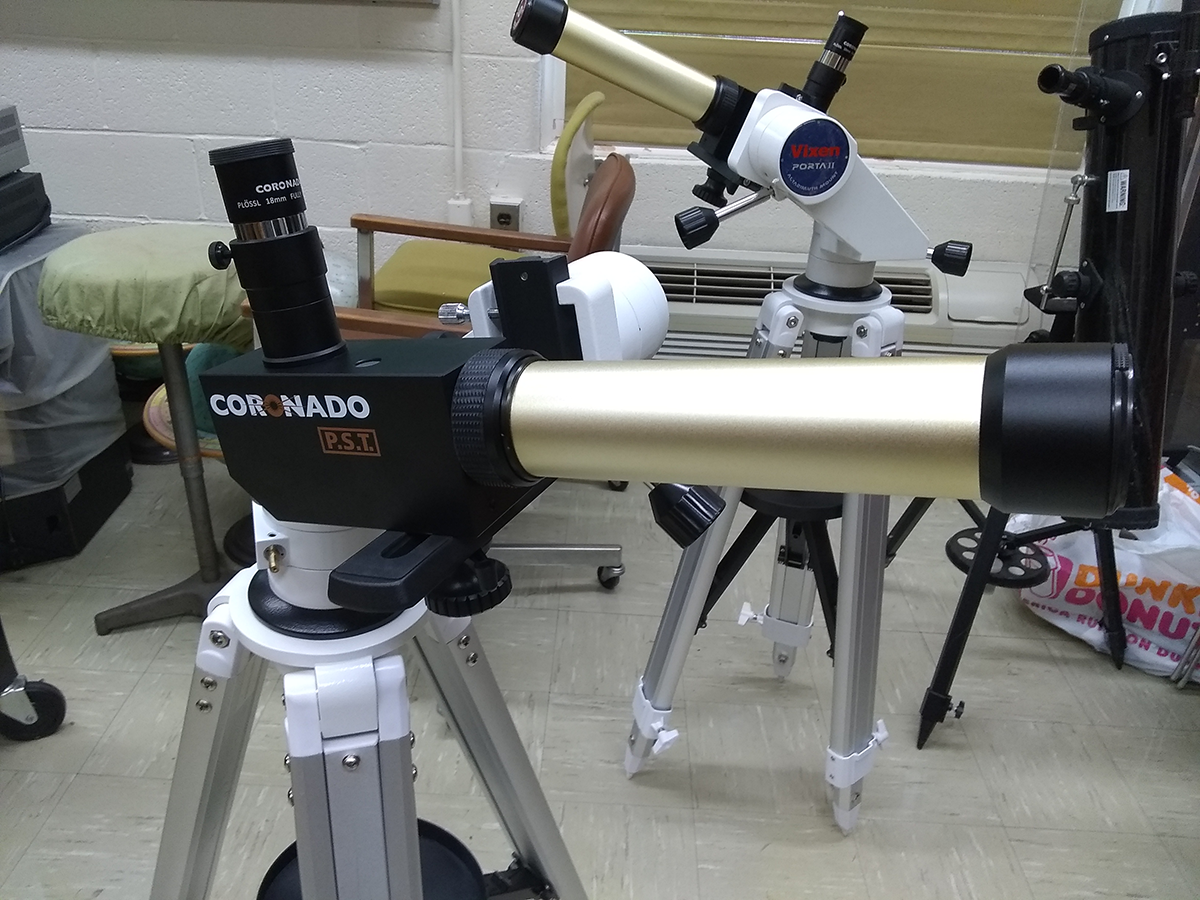
The Clark, our lovely 19th-century telescope. Much to be written on it another time, but here’s a picture with the dome open on a fine, sunny day.
Just look at that lovely brass set against the black steel tube. Magnificent.
Discoveries in the Physics & Astronomy shop | Science, curiosities, and surprises

The Clark, our lovely 19th-century telescope. Much to be written on it another time, but here’s a picture with the dome open on a fine, sunny day.
Just look at that lovely brass set against the black steel tube. Magnificent.

There are a wealth of options when choosing a telescope. Refractor (lens), reflector (mirror), or catadioptric (both)? How large an aperture (because letting in more light lets you see fainter, more distant objects)? Manual or computerized control? Optical viewing, astrophotography, or both? Alt-azimuth or equatorial mount? And so on. Dedicated astronomers can get deep in the weeds on the finer details.
What they all have in common is a BIG WARNING often in BRIGHT RED ALL CAPS that you should never, ever, point your telescope at the Sun. It’s solid advice.
Looking directly at the sun with your naked eye is likely to cause permanent eye damage. Doing so with the extra light-gathering power of a “light bucket” only accelerates the problem. Even if you don’t peer through it, the heat that builds up within the telescope’s delicate optics is enough to irreparably damage them and ruin your very expensive equipment. What’s an aspiring solar astronomer to do?
Find a solar telescope, of course. A few special features make this telescope safe for solar viewing (and somewhat less useful for anything else). It has a very small aperture, because it really isn’t necessary to collect more light from the brightest thing in the sky. It has a small section of opaque glass on top of the telescope which shows a pinpoint of light when the sun is approximately in view. And, best of all, it has an narrowband filter around H-alpha.
H-alpha is a specific wavelength of light emitted by excited hydrogen atoms, about 656nm, and the brightest hydrogen emission in the visible wavelengths of light. It’s quite red. It’s also, through a suitably narrow filter, something you can safely observe with your eyes. Pare away the other visible light, all of the UV and IR, and you’re left with the sun. Red, intense, and through the proper set of optics, magnified so that you can see amazing things.
Prominences erupting from the surface. Dark filaments that indicate region of magnetic shear. Sunspots and flares. The speckled, roiling surface of a star that’s like an orb of churning lava. It’s very cool. Astronomy you can study without staying up all night.
Still a bust on cloudy days.